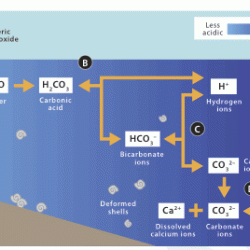Source Institutions
Source Institutions
Add to list Go to activity

In this group activity, learners act out key stages of the "ocean carbon cycle" (also known as the "carbonate buffer system") through motions, rearranging blocks and team tasks. Learners will also hypothesize the potential effects on the ocean and coral when variables are changed (e.g. the addition of massive amounts of CO2 and increased water temperature). At least 8 learners are needed to participate in the simulation. This detailed lesson plan includes an introduction, background information related to corals and the ocean carbon cycle, and adaptation suggestions for younger learners. [Activity is publicly available through a web crawler capture on Archive.org.]
- 5 to 10 minutes
- 45 to 60 minutes
- $1 - $5 per group of students
- Ages 11 - 14
- Activity, Lesson/Lesson Plan, Simulation
- English
Quick Guide
Materials List (per group of students)
- Interlocking blocks (e.g. LEGO® bricks)
- Large opaque container
- Large quantity of CO2 pieces (optional)
- 12 plastic storage boxes or tennis ball containers (labeled)
- 2 tables or desks
- Heavy coat(s)
- Tags/lanyards (labeled with role title and job summary)
Subjects
-
Earth and Space Science
-
Earth Structure
- Oceans and Water
- Atmosphere
-
Earth Structure
-
Life Sciences
- Cells
-
Diversity of Life
- Animals
- Classification
-
Ecology
- Ecosystems
- Energy Flow and Chemical Cycles
-
Physical Sciences
-
Heat and Thermodynamics
- Heat and Temperature
-
Chemistry
- Chemical Reactions
- Acids and Bases
- Oxidation-Reduction Reactions
- Solutions
-
Structure and Properties of Matter
- Atomic Structure
- Elements and Periodic Table
- Elementary Particles and Nuclear Physics
-
Heat and Thermodynamics
Informal Categories
- Animals
- Nature and Environment
- Performing Arts
- Physical Activity
Audience
To use this activity, learners need to:
- see
- read
- be mobile
- touch
Learning styles supported:
- Involves teamwork and communication skills
- Involves hands-on or lab activities
Other
Includes alignment to state and/or national standards:
This resource is part of:
Access Rights:
- Free access
By:
- Anderson, Stephanie L.
Rights:
- All rights reserved, Pacific Science Center,
Funding Sources:
- Tiffany & Co. Foundation
- Unilever
- Rockefeller Family
